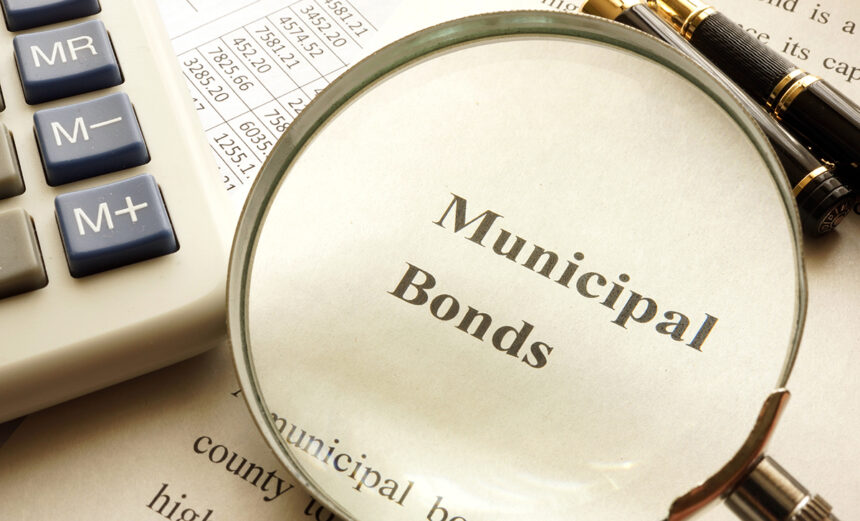In “The True Value of Your Muni Portfolio,” I considered alternative ways of quantifying the investor-specific value of a taxable portfolio. The market value is not suitable, because liquidating the portfolio would have tax consequences, and therefore the liquidation value would be different from the market value. Instead of the market value, I recommended the “tax-smart” value, which is the greater of the security’s after-tax sale price and hold value.

Let’s calculate the tax-smart value of a 10-year 5% bond purchased two years ago at the price of 113.3, whose current tax basis is 111. Today, with eight years remaining to maturity, the market price is 106. Sale at 106 would produce a 5-point long-term capital loss and therefore a 1-point tax saving at a 20% tax rate, resulting in after-tax proceeds from sale of 107. This exceeds the 106 hold value, and therefore today the tax-smart value is 107.
Should you sell this bond at 106 and realize the 5-point loss, or should you continue holding it?
There are two investment strategies: sell and reinvest, or do nothing. In case of a sale, the after-tax proceeds are reinvested in a like 5% 8-year bond, thus the par amount of your holding would increase by a factor 107/106.
Let’s calculate the tax-smart performance of the two strategies one year later, under two scenarios. What if rates decline and the price increases from 106 to 110? What if the price drops to 102?

The tax-smart portfolio values corresponding to the two strategies are shown in the accompanying tables. Note that the tax basis depends on the strategy: Under the do-nothing strategy, based on the original 113.3 purchase price, it is 109.782. Under the sell and repurchase at 106 strategy, it is 105.352, and the notional amount of the investment has increased by a factor 107/106. The tax-smart returns, as measured by IRR, depend on the terminal tax-smart portfolio values and the coupon interest received during the year.
Scenario 1: Price Rises to 110 in Year 3
| Year 2 Tax-Smart Value ($M) | Strategy In Year 2 | Year 3 Market Value ($M) | Year 3 Basis ($M) | Year 3 Tax-Smart Value ($M) | Adjusted Semiannual Coupon ($M) | Year 3 Return (%) |
| 107.0 | Sell/Reinvest | 111.038 | 106.346 | 111.038 | 2.524 | 8.414 |
| 107.0 | Do Nothing | 110.000 | 109.782 | 110.000 | 2.500 | 7.426 |
If the price increases to 110, the return based on sale in Year 2 is 8.414%, and without sale it is 7.426%. The roughly 1% difference is due to the opportunity cost of not recognizing the capital loss at the end of Year 2 — once the price increases, such opportunity may be lost forever.
Scenario 2: Price Falls to 102 in Year 3
| Year 2 Tax-Smart Value ($M) | Strategy in Year 2 | Year 3 Market Value ($M) | Year 3 Basis ($M) | Year 3 Tax-Smart Value ($M) | Adjusted Semiannual Coupon ($M) | Year 3 Return (%) |
| 107.0 | Sell/Reinvest | 102.962 | 106.346 | 103.639 | 2.524 | 1.589 |
| 107.0 | Do Nothing | 102.000 | 109.782 | 103.556 | 2.500 | 1.466 |
If the price declines to 102, the performance of the tax-loss selling strategy is still slightly better: 1.589% vs. 1.466%. The difference is partly attributable to the greater interest income from reinvestment under the tax-loss selling strategy, and it also depends on the amortization of the basis corresponding to different purchase prices.
Realizing a loss and reinvesting has an additional benefit: It restarts the short-term clock. Long-term losses are deductible at 20%. Short-term losses, or those incurred in less than one year, can be deducted at the much higher rate of 40%, provided that there are offsetting short-term gains. Assuming such is the case, if the market price declines to 102, the 3.384 loss (106.346-102.962) would result in 1.354 tax savings. The tax-smart terminal value would increase to 104.316, and the return to 2.223%, from 1.589%.

In summary, tax-smart portfolio valuation signals opportunities to improve after-tax performance by recognizing losses. It pinpoints selling opportunities by comparing after-tax proceeds from sale to hold value. Sale and reinvestment is particularly effective if the price subsequently improves, due to the opportunity cost associated with staying idle. If the price subsequently declines, restarting the short-term clock provides an opportunity to recognize short-term losses at a high effective tax rate, further improving performance relative to doing nothing.
If you liked this post, don’t forget to subscribe to the Enterprising Investor.
All posts are the opinion of the author. As such, they should not be construed as investment advice, nor do the opinions expressed necessarily reflect the views of CFA Institute or the author’s employer.
Image Credit: © Getty Images / designer491
Professional Learning for CFA Institute Members
CFA Institute members are empowered to self-determine and self-report professional learning (PL) credits earned, including content on Enterprising Investor. Members can record credits easily using their online PL tracker.








